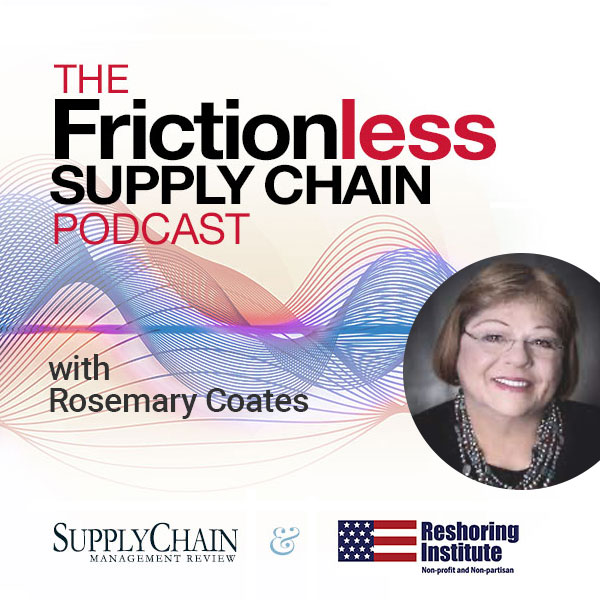Warehousing facilities play a vital role in the overall supply chain process. This article will address “back to the basics” that are fundamental for warehouses to achieve both efficiency and effectiveness in supply chains, and provide some perspective on current challenges and the future.
It is evident that continuing globalization and changes/challenges occurring in such areas as reverse logistics, environmental sustainability, information technology, and overall supply chain integration are further evolving the strategies, roles, and responsibilities for warehouses.
In fact the term “distribution center (DC)” may be much more appropriate in representing the broad range of activities that now occur in modern warehouses that go beyond filling customer orders to provide an ever expanding array of value added services.
Back to the Basics
There are a number of situations where DC’s simply would add cost (and little or no value) to the supply chain. DC’s add little or no value for products bought in bulk (e.g. raw materials, manufactured items) with little or no time sensitivity associated with their use. Products insensitive to transportation costs (i.e. transportation cost is a small percentage of product value) also typically move directly to customers.
For other products, however, DC’s provide a dual value-added role making supply chains more efficient and more effective. DC’s add efficiency by consolidating products for shipment to customers, reducing transportation costs, and performing a broad range of value added services (e.g. branding, labeling, assembly, packaging, kitting, reverse logistics). DC’s also make the supply chain more effective. The strategic placement of DC’s allows the positioning of products and services close to major markets and customers (the economic principle of place utility).
Optimization strategies are utilized to position product availability and delivery as a competitive advantage while also optimizing the cost trade-offs associated with transportation, facilities, equipment, workforce, and other critical cost variables. DC’s also facilitate time utility by storing product until it is demanded.
Product type often determines the need for and specific role of DC’s in the supply chain. Characteristics to be considered include:
- SEASONALITY in either PRODUCTION or CONSUMPTION
- DEMAND VARIABILITY
- MANUFACTURING ECONOMICS
- MARKETING and PROMOTIONAL INITIATIVES
- TRANSPORTATION ECONOMICS
- SERVICE REQUIREMENTS
- CUSTOMIZABILITY and VARIANTS of PRODUCT
Products that have extremely high service requirements from a time perspective present unique challenges since they often effect the efficiency, performance, and cost of customers’ operations. As an example companies that distribute parts for technology products (e.g. computers) and capital goods (e.g. airplanes, construction machinery) must be capable of distributing those parts within hours. Similarly many automotive manufacturers have “inbound” DC’s located in close proximity to manufacturing plants so that subassemblies and other components can be assembled and “profiled to line“ for the production process.
Postponement is also becoming a critical issue and value added service for DC’s. When demand is unpredictable it often makes sense to “assemble and ship to order”. Inventories remain “generic” providing more flexibility and reducing costs (e.g. inventory, transportation, surplus, obsolescence). Postponement is particularly effective in supporting customer product configuration and branding requirements.
Company capabilities to determine DC requirements are essential for achieving successful networks and operations. DC requirements include location, design and operations, determining the information and technology requirements, and measuring performance.
Location
In addition to transportation costs DC location is determined based on the the location of major markets and customers, the location of supply points, the volume of product moving to or from supply points and customers, transportation rates, the level of service required, and the product characteristics. Local conditions including access to and cost of labor, land and buildings, IT/communications infrastructure, transportation infrastructure, and government policies (e.g. environment, incentives, taxes) also play a significant role in determining location.
Design & Operations
The product, how it is received, the nature of customer orders, service levels, and transportation mode are the primary determinants of distribution center design and operations. Product characteristics include weight and dimensions, packaging, shelf life, temperature and lot control requirements, and hazardous material requirements. How the product is received is critical to both inbound operations efficiency (dock to stock cycle time) and space utilization/storage efficiency.
To optimize efficiency in inbound operations it is ideal to receive material in an immediately storable conveyance (e.g. pallet, case, box). The types and volumes of orders that are processed and the number of stock-keeping units (SKU’s) in the DC are important considerations in determining layout, equipment selection, and business process requirements. Storage equipment selection should be matched to product characteristics, volume, and any additional unique requirements (e.g. security, temperature control, lot control).
A word of caution if you are considering automation - automation to reduce transit time in the distribution center almost always represents an opportunity for improved efficiency. Automation of other processes (e.g. receiving, locating/storage, order filling) may become a critical constraint particularly if there is a significant variation in demand (e.g. seasonality), change in product characteristics, or change in product mix.
Information and Technology Requirements
Information is the critical driver for successful DC operations. Short term forecasts provide information to determine labor and space requirements over a short term planning horizon. Longer term forecasts are used for capacity planning (e.g. DC size, workforce and equipment requirements.). Information technology is critical in achieving DC performance. Warehouse Management Systems (WMS) direct where products should be stored and provide the necessary functionality for the completion and optimization of receiving, storing, and shipping operations. Additional functionality may permit the use of hand held devices and bar coding to optimize efficiency and reduce errors. Most WMS systems also include inventory management functionality that permits the DC to have real time information on the inventory status of all items in the DC.
Measuring Performance
The primary objectives of DC’s include providing the right product, at the right place, right time, and damage free – at a competitive cost. Fundamental to achieving and sustaining these objectives is measuring performance. The most common DC performance measures include handling productivity, space utilization, accuracy, damage, service, cost, and inventory. Handling productivity is often measured in “units or lines” picked per hour or total handling cost per “unit”. Space utilization is evaluated based on the percentage of total space available for storage, percentage of useable storage space actually used for storage, and storage cost per unit of product.
Accuracy includes measures of location and record accuracy, the percentage of items picked correctly, and the percentage of orders picked correctly. Damage measurements include the percentage of items picked that are undamaged when received by the customer and the percentage of orders picked without damaged merchandise. Service measures include fill rate which is based on the number of orders that were filled completely.
Cycle time is also a critical measure to determine service and efficiency. Dock to stock cycle time is a critical measure of how long it takes to make material available following receipt. Order cycle time measures the elapsed time from order receipt until order shipment. Order cycle time may also include transportation to measure the total elapsed time until the customer receives the product. Cost and inventory performance measurements include total distribution center cost per unit handled, distribution center cost as a percentage of sales, and inventory turnover.
Where Are We Now?
Understanding DC performance measurements is critical to achieving successful outcomes. A recent study (January 2010) conducted among DC Velocity’s readers and members of the Warehousing Education and Research Council (WERC) by Georgia Southern University (Dr. Karl Manrodt) and consultancy Supply Chain Visions (Kate Vitasek and Joseph Tillman) is their seventh annual survey of key distribution center and warehousing metrics. Although the survey indicates slow but steady improvement in operational performance it highlights significant opportunities for improvement.
Following are some key conclusions:
- Senior management cares about performance measurement.
- The 10 most popular measures used by respondents in 2010 include:
| Metric | % Using | ||
| 1 | On time shipment - Customer | 85.8% | |
| 2 | Order filling accuracy - Quality | 73.2% | |
| 3 | Average warehouse capacity used - Capacity | 70.4% | |
| 4 | Annual workforce turnover - Employee | 60.2% | |
| 5 | On time ready to ship - Outbound Operations | 58.8% | |
| 6 | Peak warehouse capacity used - Capacity | 58.7% | |
| 7 | Fill rate-line - Outbound Operations | 57.7% | |
| 8 | Dock to stock cycle time in hours - Inbound Operations | 56.2% | |
| 9 | Inventory count accuracy by location - Quality | 53.0% | |
| 10 | Order fill rate - Outbound Operations | 50.7% |
- Wide gaps in performance exist for several metrics:
| Metric | Lower 20% of responses | Top 20% of responses | Difference in Performance | Performance Gap |
| Lost sales (% of SKU’s stocked out) | Greater than 5.6% | Less than 0.01% | 5.59 | 99.8% |
| Inventory shrinkage as a % of total inv. | Greater than 1.5% | Less than 0.01% | 1.49 | 99.3% |
| Material handling damage | Greater than 1% | Less than 0.007% | 0.993 | 99.3% |
| % of Unsaleables (damaged product) | Greater than 0.5% | Less than 0.06% | 4.94 | 98.8% |
| Backorders as a % of total lines | Greater than 7.6% | Less than 0.18% | 7.42 | 97.6% |
| Backorders as a % of total orders | Greater than 5.4% | Less than 0.2% | 5.2 | 96.3% |
| Annual workforce turnover | Greater than 17% | Less than 0.8% | 16.2 | 95.3% |
| Backorders as a % of total dollars/units | Greater than 5.6% | Less than 0.5% | 5.1 | 91.1% |
| Suppliers orders received/hour | Greater than 0.9/hour | Less than 10.26/hour | 9.4 | 91.0% |
| Dock to stock cycle time in hours | Greater than 24 hours | Less than 2.3 hours | 21.7 | 90.4% |
The complete report is available in the Resource Center at www.werc.org.
What’s Next?
The gap analysis in this survey should challenge each of us to reassess our DC performance measurements. What do we measure? How often do we measure? What are the results? How do we compare? The gaps represent significant opportunities for improvement in bottom line results. The bottom line results will not be achievable without refocusing DC organizations on the fundamentals of cost, quality, and operational performance.
Benchmarking assessments also consistently indicate that business process competence and workforce buy-in are important contributors to success. Business process competence is underpinned by statistical discipline (e.g. Lean, Six Sigma). Workforce buy-in is not only critical but the workforce can become an outstanding source for continual process improvement. If you don’t benchmark please let me encourage you to do so both within and outside your principal industries and markets.
As we view the future, the role and responsibilities of DC’s will continue to be shaped by the globalization of business and the integration of supply chains. As supply chains extend and become more complex and costly to operate, information technology will be critical to achieve efficiency and performance. Supply chain differentiation will continue to be achieved through value added services that reduce cost, improve service, and enhance overall product value and the customer experience.
In examining the basics, our experts from the University of Tennessee will explain how mastery in the following areas leads to success on the bigger supply chain stage:
- MANAGING THE BASIC SUPPLY CHAIN FUNCTIONS (Part 1)
- TRANSPORTATION (Part 2)
- WAREHOUSING (Part 3)
- SOURCING and PROCUREMENT (Part 4)
- RETURNS MANAGEMENT (Part 5)
- POST-SALES SERVICE (Part 6)
- PARTNERSHIPS and COLLABORATION (Part 7)
Make sure you are on our eNewsetter list so we can notify you when the next series is online.
For more articles on Supply Chain Management, check-out our Critical Topics page
SC
MR

Latest Supply Chain News
- Despite American political environment, global geopolitical risks may be easing
- Joseph Esteves named CEO of SGS Maine Pointe
- Employees, employers hold divergent views on upskilling the workforce
- April manufacturing output slides after growing in March
- Q1 sees a solid finish with positive U.S.-bound import growth, notes S&P Global Market Intelligence
- More News
Latest Podcast

 Explore
Explore
Latest Supply Chain News
- Despite American political environment, global geopolitical risks may be easing
- Joseph Esteves named CEO of SGS Maine Pointe
- Employees, employers hold divergent views on upskilling the workforce
- April manufacturing output slides after growing in March
- Q1 sees a solid finish with positive U.S.-bound import growth, notes S&P Global Market Intelligence
- World Trade Centers offers a helping hand to create resilient, interconnected supply chains
- More latest news
Latest Resources

Subscribe

Supply Chain Management Review delivers the best industry content.

Editors’ Picks





